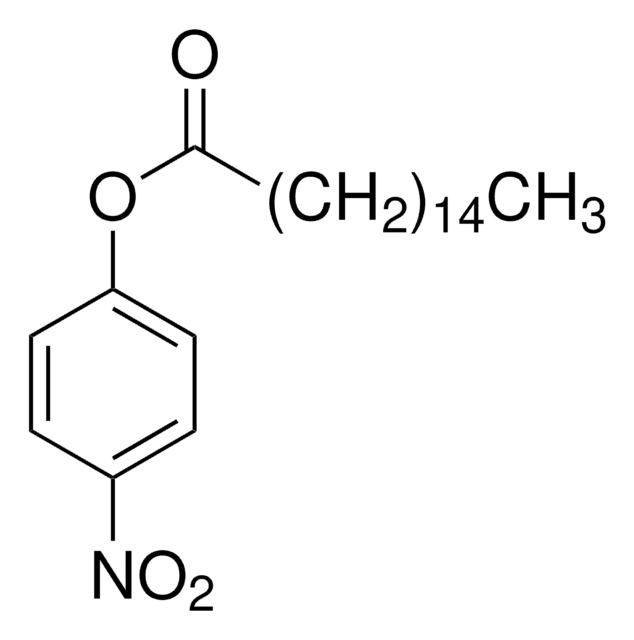21604
2-Bromohexadecanoic acid
≥99.0% (GC)
Sinónimos:
2-Bromopalmitic acid
About This Item
Productos recomendados
Análisis
≥99.0% (GC)
formulario
solid
mp
52-54 °C
solubilidad
methanol: soluble 1 g/10 mL, clear, colorless
chloroform: soluble
ethanol: soluble
water: insoluble
grupo funcional
bromo
carboxylic acid
cadena SMILES
CCCCCCCCCCCCCCC(Br)C(O)=O
InChI
1S/C16H31BrO2/c1-2-3-4-5-6-7-8-9-10-11-12-13-14-15(17)16(18)19/h15H,2-14H2,1H3,(H,18,19)
Clave InChI
DPRAYRYQQAXQPE-UHFFFAOYSA-N
Información sobre el gen
human ... PPARD(5467)
¿Está buscando productos similares? Visita Guía de comparación de productos
Descripción general
Aplicación
<li><strong>Chemo-immunotherapy Applications:</strong> 2-Bromohexadecanoic acid has been utilized to create bioactive fatty acid analog-derived hybrid nanoparticles for chemo-immunotherapy against carcinoma, demonstrating potential in cancer treatment without the need for antibodies (Tan et al., 2023).</li>
<li><strong>Drug Target Identification for Coronavirus:</strong> 2-bromopalmitate (2-BP) can be used as an inhibitor and is used to suppressed SADS-CoV treatment (Luo et al., 2021).</li>
<li><strong>Cancer Therapy Enhancement:</strong> This compound has shown efficacy in sensitizing osteosarcoma cells to adriamycin-induced apoptosis through modulation of CHOP, indicating its therapeutic potential in enhancing cancer treatment (Xu et al., 2019).</li>
<li><strong>Membrane Protein Localization in Sertoli Cells: </strong>It has been involved in studies related to the localization of the androgen receptor to plasma membranes by binding to caveolin-1 in mouse Sertoli cells, contributing to the understanding of cellular signaling pathways. It is Used to inhibit palmitoylation of androgen receptor (AR) and used to evaluate the effect of the inhibitor on androgen receptor (AR) translocation (Deng et al., 2017).</li>
<li><strong>Palmitoylation Inhibition:</strong> 2-Bromohexadecanoic acid has been profiled as an irreversible inhibitor of palmitoylation, providing insights into the regulation of protein modifications and their implications in various diseases (Davda et al., 2013).</li>
</ul>
Aplicación
Código de clase de almacenamiento
11 - Combustible Solids
Clase de riesgo para el agua (WGK)
WGK 3
Punto de inflamabilidad (°F)
235.4 °F - closed cup
Punto de inflamabilidad (°C)
113 °C - closed cup
Equipo de protección personal
dust mask type N95 (US), Eyeshields, Gloves
Elija entre una de las versiones más recientes:
¿Ya tiene este producto?
Encuentre la documentación para los productos que ha comprado recientemente en la Biblioteca de documentos.
Los clientes también vieron
Chromatograms
application for HPLCNuestro equipo de científicos tiene experiencia en todas las áreas de investigación: Ciencias de la vida, Ciencia de los materiales, Síntesis química, Cromatografía, Analítica y muchas otras.
Póngase en contacto con el Servicio técnico











